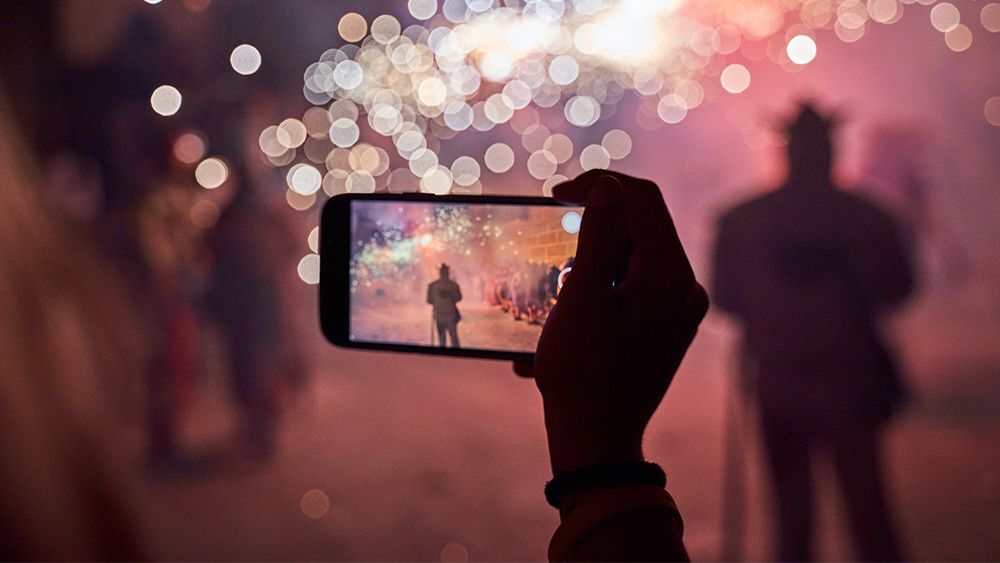The countdown to 2025 is one, so you may be wondering how to take photos of fireworks on a phone to capture the moment at midnight. Fireworks are a part of New Year’s Eve celebrations in many places, but people are often disappointed that their photos don’t look as impressive as they hoped.
The good news is that whether you’re watching a massive display like the London fireworks on the Thames or a more humble affair in your neighbour’s garden, there are a few things you can do to get better fireworks shots and avoid blurred, low-contrast images – even on a smartphone (see our pick of the best camera phones for creatives if you need a new device).
How to take photos of fireworks on a phone
When you’re taking shots of fireworks, you don’t have much time to react, so I recommend playing around with your settings in advance so you know where things are. Here are seven general tips that can help you get better results.
01. Find a good composition
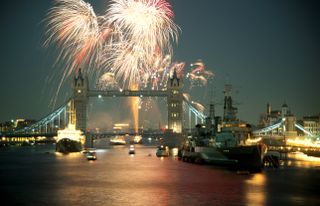
As with most kinds of photography, one of the most common mistakes people make is not thinking about the composition, and this is really the key to a great shot. Like astro shots of starry skies, photos of even the most impressive fireworks often disappoint if there’s nothing else in the composition. Without other elements to provide context, all you have are some sparks in the sky, which isn’t really very interesting to look at because it could be anywhere. Finding a location where you can frame a shot to include buildings, landscape or people in the foreground can result in a much more impressive image.
02. Choose the right settings for fireworks photos
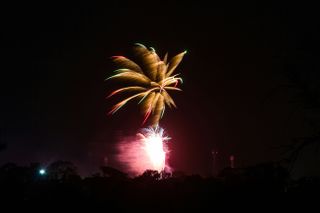
For smartphone photography, many of us use automatic settings. These can be fine for taking quick shots of everyday scenes, but they can let us down when it comes to taking shots at night, and particularly of fireworks. The problem is that the camera will often try to expose for the dark sky, making the image too bright, with insufficient contrast to see the fireworks clearly. You’re phone may also take an exposure that’s too long, leading to blurry fireworks.
If you’re using a full manual settings (or a camera rather than a phone), I would recommend an aperture of around f/8, base ISO and a shutter speed of 10 to 20 seconds depending on the scene. If you want to keep things simple, the easiest adjustment you can make to quickly improve fireworks photos is to lower the exposure, darkening the image. Simply tap your phone screen and drag the light meter down.
Try using another bright object like a street light to get the right level of exposure before the fireworks start and then locking it. Also make sure you focus on the fireworks rather than foreground elements. To lock your manual focus and exposure settings on an iPhone, touch and hold the focus area until you see AE/AF Lock. You can tap the screen to unlock settings.
03. Disable flash and high-dynamic range (HDR)
Don’t use a flash! While your camera’s flash can be useful for some forms of photography in low light, it makes no sense for fireworks because the fireworks themselves generate light, and your flash won’t reach them anyway. All the flash will do is illuminate objects closer to you.
Also make sure you don’t have HDR enabled. This may sound counter intuitive since HDR is designed precisely for the purpose of capturing high-contrast scenes. The problem is that it works by taking multiple shots and then patching them together. Fireworks are a moving subject, which means they will often turn out blurred in an in-camera automatic HDR composite. You may also find that the background is made too bright.
04. Use burst shooting to capture a precise moment
Burst shooting allows you to fire off a batch of shots in quick succession. The clear advantage of this for photographing fireworks is that if you start the burst shot just as a fireworks launch, you’ve got more chance that one of the shots taken will capture the precise moment the fireworks explode.
05. Try video
Many cameraphones can now capture 4K video. The advantage of video is that you can capture more of a fireworks display and not miss a moment, and 4K footage is a high enough resolution that you could extract stills from it if you want photos rather than moving images.
Another option is to enable Live Photos (iPhone) or Motion Photos (Samsung Galaxy), to capture multiple frames. You can then choose which is the best frame to set as the key photo.
06. Create an HDR photo
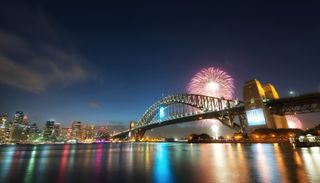
Want to take things to the next level? We mentioned turning off your camera’s automatic HDR. But for really pro fireworks shots, you could create your own HDR images manually by taking two photographs and then layering them.
You’ll want a tripod to keep your phone or camera steady (and ideally use a remote shutter release). Take one photo of the composition before the fireworks start (or after they finish) with a longer exposure time to correctly expose for foreground elements. Then take photographs of the fireworks with the exposure adjusted as necessary. You can then use your original photo for the background and put the fireworks on top as a layer in Photoshop or as an HDR image in Lightroom.
07. Experiment
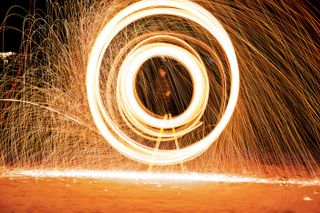
If you have the time to try out different things, fireworks provide a great opportunity to experiment with creative photography. You could try taking long exposures to capture light trails. This can be particularly effective with sparklers, allowing your subject to draw images in the air with light. You could also try capturing long exposures as fireworks explode, capturing the trails that form as sparks fall.
How to edit photos of fireworks
After you’ve taken your shots, you’ll often be able to make photos of fireworks look better with a little bit of editing. That could be in an app like Lightroom or even in your phone’s own camera app.
If you do plan to edit your fireworks photos, plan ahead and make sure you take the images as raw files rather than jpeg (if your phone supports it). This will give you more information to play with in editing.
Editing options will depend on the software you’re using, but most editing apps will allow you to adjust luminance, contrast, white balance (temperature) and saturation. If the fireworks look too bright compared to the foreground, try reducing the highlights and lifting the shadows. Alternatively, you may find you need to bring down the blacks to make the sky darker and create more contrast.
Since fireworks don’t have a correct colour as such, you can play with white balance and hue and saturation as you wish. Increasing the saturation may make the fireworks look more impressive, but try to ensure any colours in the foreground or background remain realistic. If you use Lightroom, the ‘Dehaze’ control can be useful if you want to reduce the appearance of smoke or clouds in the scene.
If you’re creating a composite from two or more images with different exposures for the fireworks and foreground, you can layer these using Photo Merge > HDR in Lightroom.
However you take your photos of fireworks this New Year’s Eve, make sure you have fun, and most importantly stay safe. Follow all safety advice if you’re handling fireworks yourself and keep a safe distance. Happy new year for 2025!
See below for the best prices on camera phones in your area, and see our iPhone Pro camera tips and our primer on smartphone photography for more advice.
